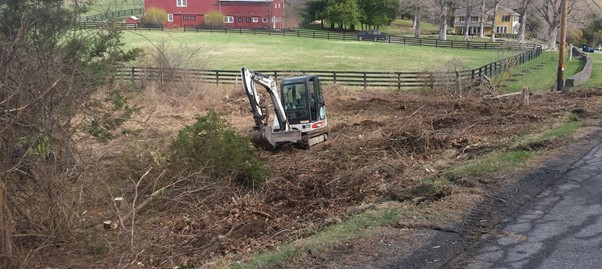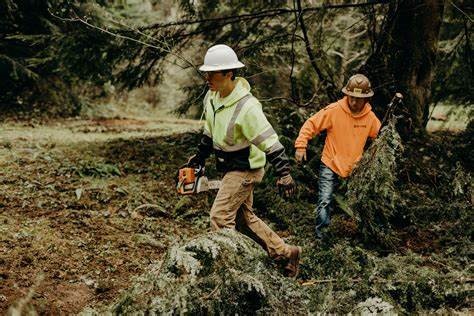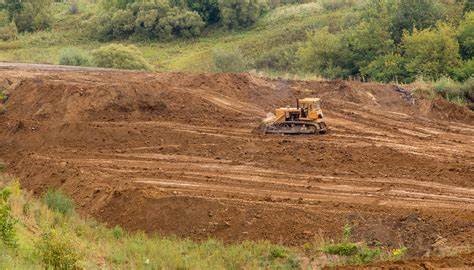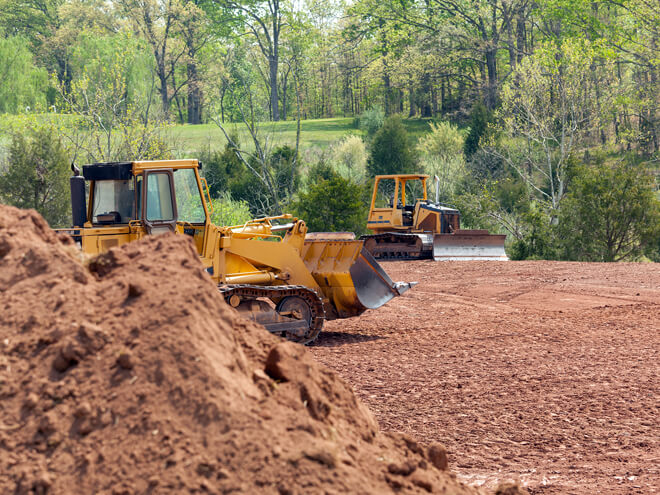The cost of clearing land is never a fixed one. It depends on how big the land is and the nature of the work to be done. This implies that we can be talking in terms of a couple of hundred dollars to several thousand dollars. The entire project and its funding depend upon the type of work that needs to be done on it.
What are these factors exactly that determine the bigger picture? Well, to be fair they vary from place to place, time to time, and even man to man. Most of the time people tend to forget about the legal proceedings. The process of acquiring permission is very essential and in most cases required if a big area is involved. In case if the area tree service is going to involve corresponding expenses like planning departments or local zoning it is essentially going to add to your bill.
One straight rule that holds is, bigger the land, the higher is the expenses to clear it. In some cases, the clearing cost can rise as high as $2.00 per square foot and shockingly higher if heavy trees are present in the area. If you’re not careful enough these expenses can add up and rise way past your budget in no time.
Hauling and disposing of are other important components that decide the cost of clearing your land. Often you find unwanted objects as waste products from the site. If non-mechanical our traditional tools are used, not only does the job become less efficient but also more time-consuming. Likewise, the more time it takes the more money it needs.
Ultimately work by hand increases the time as well as the expenses involved in the job of clearing your land. On the other side, thinking about using the expensive and bulky drills and other machines. It’s very inconvenient and loud and in most cases, creates a mess. The best way is to let the professionals decide which tools to use because either way you are bound to spend a dime or two.
Another major element is nature. Weather plays a very important role in determining the cost of the job. In case of a big storm heading your way, contractors are likely to increase their prices. This is due to their high demand prior to the storm. If Mother Nature plans to play a spoilsport midway through the job, the project will take much longer to complete. Like we have said earlier, in this case, time is money.
The longer the project takes more expensive it becomes. You can’t really blame anyone here other than Mother Nature. Neither the contractors nor you or anyone else really can predict what she has in plan. This is one risk you have to take. Bad weather is unpredictable and therefore there’s always a gamble involved. In case you have a race against the clock, make sure to start your project as soon as you can, even better if you get quotes from the contractors after adding the bad weather factor.
After the job is done, it generally leaves the site in a state of total mess. Cleaning up the site is an even bigger mess. The clean-up job decides how to proceed further in the construction. Again, he’s cleaning it up takes a substantial effort the contractors have the leverage to hike the price. You can choose to do it yourself, but cleaning up after a clearing job is done is a lot of hard work. It consumes a lot of your time, energy, and money.
Even if you use the do-it-yourself method it will take you some time and money to prepare yourself for the job. This is why most people give the contractors the freedom to clean the mess did themselves created. Not only does the job look more professional but also, takes lesser time. At the end of the day, it’s preferable to spend a tad bit extra for a much better output.
At some contractors, they have the policy I was checking the division of the property. The cost varies if the land is geographically different and has inconsistent vegetation. For instance, the expenses involved in a flat, bushy terrain are different than that of sloped grassy terrain. If the area involves heavy wood, the cost is higher than that of lightwood. In some places, the rate of clearing an acre of land with only a little vegetation is in the range of $500 to $2000.

Then again, nothing really is free in today’s world. Certain firewood companies would not only take the cleared would from you but also pay you for it. Not all of the companies do so but if you can contact the local authorities, they might give you a contact of such companies.
To be on the safer side, you can ask your friends or family, or colleagues for known contractors or recommendations. It’s always better to hand the project to somebody you know or have heard about. Get as many recommendations as you can, make sure someone you know has been associated with them. Please be sure to do some background research of the company you’re going to and your site to. That means to cross-check the company with official bureaus recommendations.
One more very important team to make sure of is insurance. In the case of an unlikely event, anything was wrong make sure that you are covered by insurance. If you find anything not convincing ask for their company’s license bonding and insurance. If they fail to produce so or are acting suspiciously be determined to walk away.
No matter how cheap or convenient it is for you, it is still illegal. A bond prevents you from having a financial loss if the contractor does not complete his work or in case of an unlikely accident.
In general, a professional company first comes to your place and takes the measurements and services the site. They offer you a full post regarding the job and an expert opinion regarding what suits you the best. They will please every card on the table before giving you a price. You can negotiate with them but generally, the professionals stick to their rates. Even you have a budget so free to make sure they know about it. Be rest assured that the professionals will not make you regret the investment.
What Are Some Methods of Reducing Costs?
Using the hand method can often be cheap despite it being very time-consuming. A chainsaw, if used at the proper time and place can be very handy.
First, Underbrushing is very important it means Cutting the grass as close to the ground as possible. All sorts of grasses, herbs, vines, and, trees with a diameter lesser than 15 centimeters must be removed to facilitate a smoother action of the chainsaw. this not only saves the chainsaw and its energy but also helps to former ground level for subsequent work.

Chainsaws are deployed in gangs. That is usually one operator and two assistants. Cut everything as deep as possible with minimal distance from the ground. The height of the brushes will vary depending upon the buttressed height. Try to make sure the trees should be felled in the same way. This helps in further construction, uniformly. No waterways should be logged in the process of felling.
To remove most of the leaves and branches usually burning method is used. The chopped-off and felled trees must be dried before burning. This prevents excessive pollution due to smoke. The process usually needs six to eight weeks depending on the region and its climate. Delaying the process of burning may cause regrowth of shrubs and herbs on the felled trees.
This causes the process of burning to be hindered. The best season to do so in the dry season. However, keep in mind to have proper safety around. This might lead to s big fire in case things go south. Be very careful, if the process of burning is done halfway, it’ll make further operations much more difficult.
The manpower is needed most in the process of stacking. The burnt wood must be cut into smaller pieces and then handled carefully. These pieces should be stacked on pallets and then stowed away, carefully. In this process, a large part of the stem is removed without leaving a big gap in the ground.
The huge pieces, more than 10 feet in diameter, should be rolled away towards the periphery of the plot and left to rot. The process of re-burning and stacking may be required to carry out a lot of times before you can reach a satisfactory ground is reached.
120210636

Corresponding Factors That Determine Land Value in General
Surveying- A land survey is very much needed in most states and is the primary step in clearing the land. This will mark and stake the boundary and determine the owner of the property and if it is legal to go for it. Another survey that will be needed is the land topography survey. This reports the terrain and contour of the land and determines the cost of the land clearing.
Testing the Soil- A geological test of the land may be needed to examine the quality of the soil further. This includes the quantitative and qualitative analysis of:
- Type of soil
- Soil characteristics like contamination, compaction, organic material, density, and strength.
- If the soil is compact enough for a property
- Reports of it being sound technically and safely.
Permissions- You need to have permission from the local authority to conduct the project on your property. This makes sure if the law enforcement allows and makes it legitimate. It may cost some dime off your pocket but ensures full cooperation from the authority in case of a mishap. There may be some environmental prerequisites that you need to keep a check on.
Manpower and Machine-Power- A big project needs several machines like mowers, chainsaws, mulchers, and even bulldozers. Each machine has a specific need an experienced handler behind it. Not only is the work tiring but requires clockwork’s precision. This comes at a big price. It takes a professional to get the job done and therefore their well-deserved pay.
Conservation of Natural Resources- The first thing before proceeding is to ensure that the trees, rocks, and natural vegetation is least affected. If the project demands a lot of trees to be chopped, you might be called to reforest by the authority. Trees close to the site, go down due to bad weather might call unwanted trouble for you. Keep in mind to contact the authority if you think there is a chance of such an event.
Site Preparation for The Building- Removing the debris and the unwanted kinds of stuff can be easier and cheaper if there is easy access to the entry and exit points for the machines. Filing and grading are necessary. They are typically dependant on the following points.
- The steepness of the property
- Densification required.
- Machines and instruments required for the project.
- Environmental norms
- Preventing erosion.
The grading is done to obtain land that is devoid of any changes in its elevation and is flat enough to lay the foundation of the upcoming project. Nevertheless, some sort of sloping is needed to have a smooth drainage system and healthy irrigation.
Miscellaneous- Utilities like gas line installing, water line installing, and groundwork done for cables can cost you some money. These are however very necessary to deal with. An error in the operation can cause the entire neighborhood or block to suffer. You do not want the neighbors getting cranky at you for a long time for this reason, do you?
The crux of the matter however lies in the fact that there are numerous factors that affect the cost of clearing the land. From the most prominent ones like the region and terrain to the unlikeliest ones of weather and debris. However, if you contact a professional company and are ready to spend a bit you will get your job done in the best way possible.

